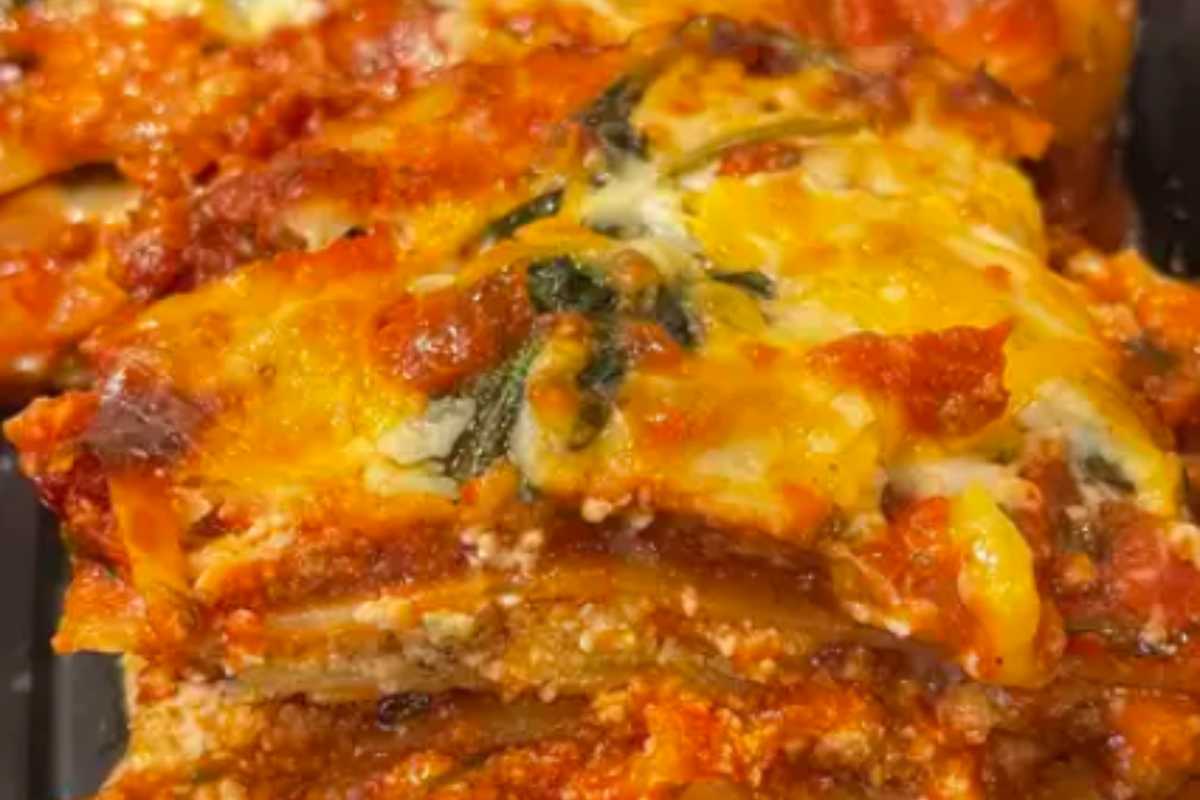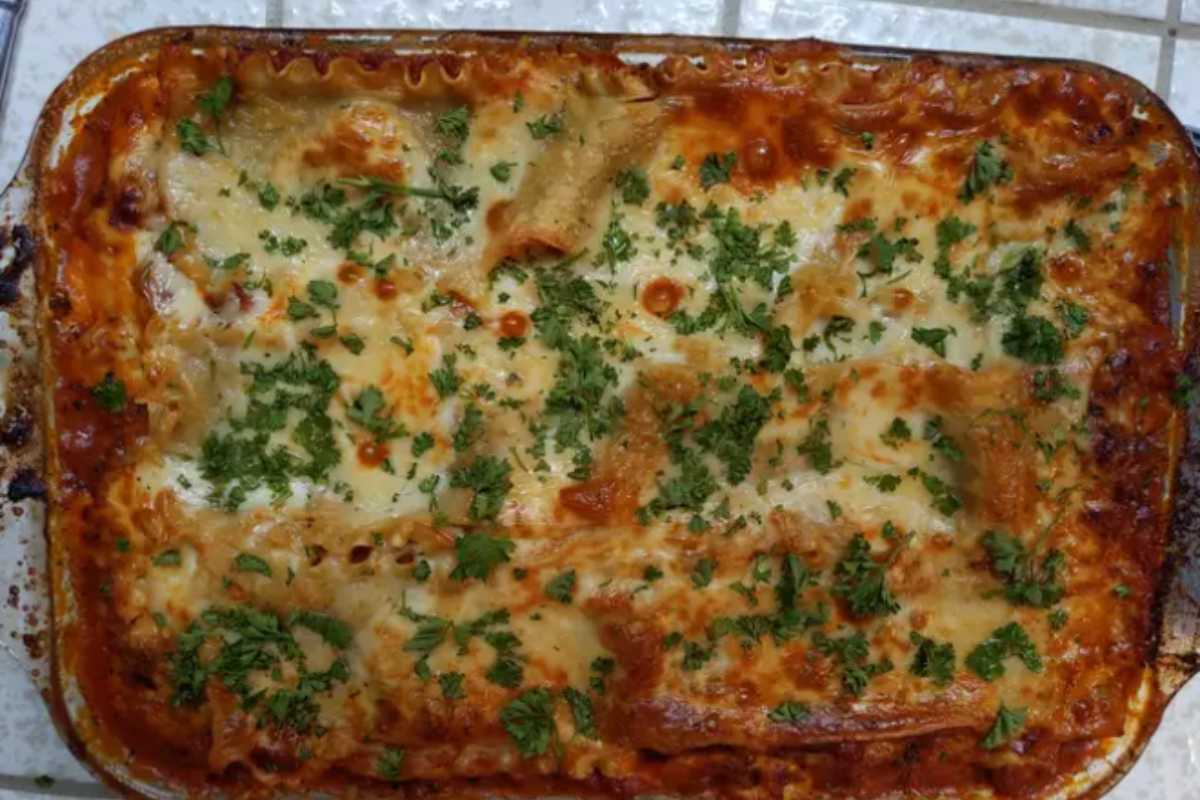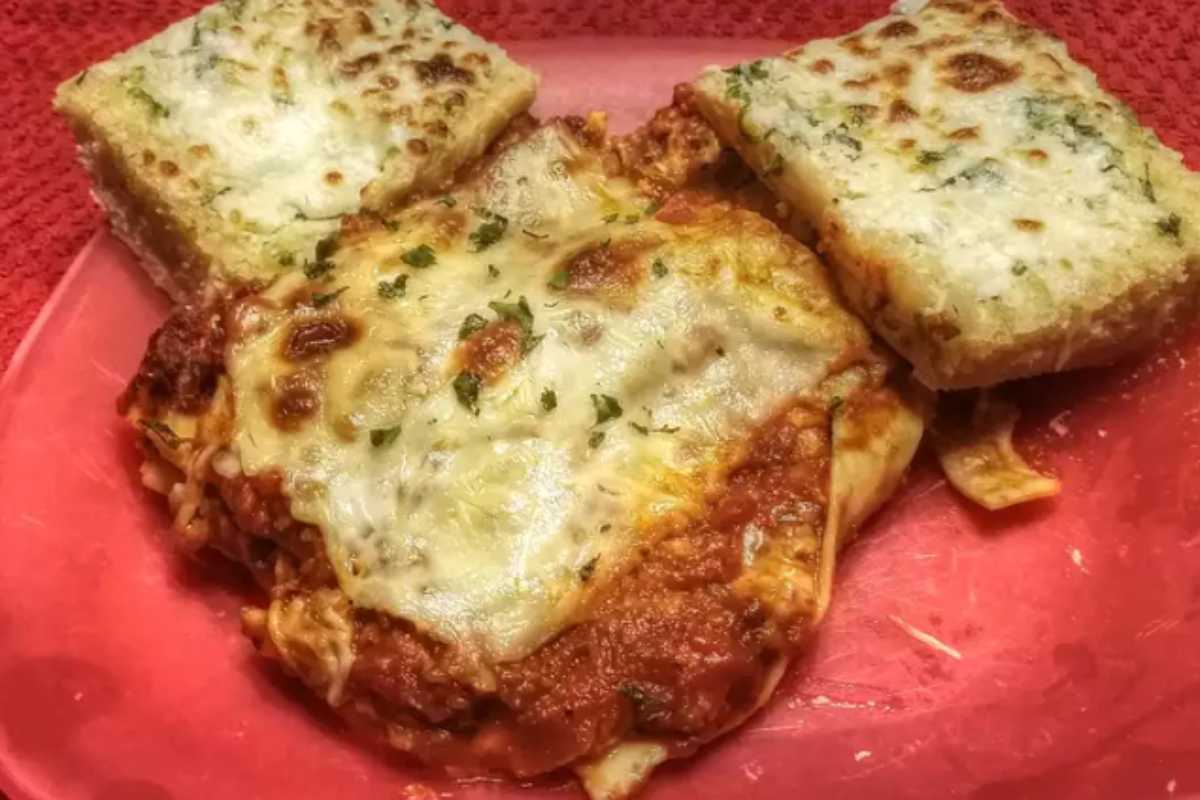How Long to Cook Lasagna: Perfect Baking Time and Techniques
Cooking lasagna is a fine art, isn’t it? It’s not just about layering noodles and sauce; it’s about finding the right balance between flavors, texture, and, most importantly, cooking time. So, how long do you cook lasagna? That all depends on a few key factors like oven temperature, the type of noodles, and whether you’re using traditional or convection ovens. Let’s dive in and get the lowdown on the ideal lasagna baking time.

Overview of Lasagna Cooking Times
When it comes to how long to cook lasagna, the usual answer is 45–60 minutes at 350°F, but there are nuances. You might need more or less time based on your oven type, the type of pasta, and the number of layers. And let’s not forget the cheese! The cheese on top is a good indicator of when your lasagna is done. It should be golden brown, bubbly, and a little crispy around the edges . If you like to play it safe, cover it with foil halfway through to prevent overcooking the top and undercooking the middle.
Speaking of oven temperature, some people like to crank it up to 375°F, reducing the baking time to about 40–50 minutes. The higher temperature can give you a crispier top, but it’s a bit riskier. You don’t want those burnt edges! So, 350°F is usually the sweet spot.
One key factor in lasagna baking time is the type of noodles. If you’re using no-boil noodles, they tend to cook a bit quicker. But traditional lasagna sheets might need a bit more time. The secret is to test with a knife or toothpick. If it goes through the pasta easily, you’re good to go (Chef’s Resource).
Preparing for Cooking

Before you even think about sliding your lasagna into the oven, you’ve got to get everything prepped and ready to go. This is where you set the stage for a mouthwatering lasagna that cooks evenly and tastes fantastic. Let’s dive into the essentials of prepping for cooking lasagna.
Ingredients and Their Preparation
First off, gather all your ingredients. You’ll need ground beef, sausage, ricotta, mozzarella, and parmesan cheese, plus tomato sauce, pasta sheets, and a few other goodies. Oh, and don’t forget the garlic, onions, and herbs—those add some serious flavor. To keep it organized, chop or dice the vegetables and set them aside. Get the cheeses ready too; you might need to shred some of them if they’re not already prepared.
If you’re using traditional lasagna noodles, you’ll need to pre-cook them. Just boil them for a few minutes—maybe half the time suggested on the package—because they’ll continue to cook in the oven . If you’re using no-boil noodles, you’re good to go without any pre-cooking.
Preparation Techniques
Now, let’s get into the technique part. For the meat sauce, you need to brown the ground beef and sausage, then drain off the excess fat. After that, you can add the onion and garlic to the same skillet and cook until they’re nice and fragrant. Once that’s done, you add in your tomato sauce and let it simmer. The key is to let the sauce develop a rich flavor without getting too watery .
Meanwhile, prepare the cheese mixture. This usually involves ricotta, eggs, and some herbs like parsley or basil. Mix them up in a large bowl, and you’re set . It’s important to keep the layers light and even when you start assembling—more on that in the next part.
Lasagna Assembly
Assembling your lasagna is a bit like building a house; each layer supports the next, and getting it right means paying attention to detail. So, let’s roll up our sleeves and start layering those delicious ingredients to create a masterpiece that’s as beautiful as it is tasty.
Layering the Lasagna
The foundation of any great lasagna begins at the bottom of your pan. Start with a thin layer of your prepared meat sauce—this helps prevent the noodles from sticking and burning. Next, place your first layer of noodles. If you’re using pre-cooked noodles, make sure they slightly overlap to provide a sturdy base .
Now, for the cheesy goodness: Spread a portion of your ricotta mixture over the noodles. It’s crucial to keep this layer even; uneven layers can lead to a lopsided lasagna that might cook unevenly. Next, sprinkle a generous amount of mozzarella and a lighter sprinkle of parmesan .
Then, it’s time for another layer of meat sauce, followed by more noodles. Repeat these layers until you’re nearly at the top of your pan. Make sure to reserve enough cheese and sauce to cover the top layer, as this will give your lasagna that irresistible golden-brown crust.

Assembling Tips
Here are a few tips to make sure your lasagna turns out perfectly:
- Don’t skimp on the sauce: Dry spots can lead to tough, undercooked pasta.
- Keep the layers uniform: This ensures even cooking and makes serving easier.
- Finish with a flourish: The final layer of cheese is what will catch everyone’s eye, so make it count. If your sauce is particularly thick, consider adding a splash of water around the edges of the pan. This moisture will help cook the noodles thoroughly and keep everything nice and juicy.
By now, your lasagna should be ready for the oven, assembled with care and ready to bake to perfection. Next up, we’ll cover the nuances of baking your lasagna to achieve that perfectly cooked, deliciously layered result.
Post-Baking Tips and Serving
Alright, your lasagna is out of the oven, and it smells amazing. But before you dive in, there’s one crucial step that can make or break the final result: resting. Yep, even lasagna needs a bit of a break before it’s ready to be served. Here’s how to nail it and a few tips for serving the perfect lasagna.
Resting Period
Once you’ve taken the lasagna out of the oven, don’t cut into it right away. The layers need a little time to set, or you’ll end up with a sloppy mess. Let your lasagna rest for at least 10 to 15 minutes. This cooling-off period helps it firm up, making it easier to cut and serve. If you’re in a hurry, use this time to set the table or make some garlic bread to go with it.
According to food safety guidelines, lasagna shouldn’t be left out for more than two hours to avoid bacteria growth . So, be ready to serve when it’s just right.
Cutting and Serving Tips
When you’re ready to serve, grab a sharp knife and make clean cuts. Aim for squares or rectangles, depending on the size of your dish. To avoid tearing the layers, use a gentle sawing motion instead of pressing down too hard.
When it comes to serving, a spatula with a thin edge works best for lifting those perfect pieces out of the pan without messing up the layers. If you’ve got a crispy top layer, be extra careful not to break it. And if you’re hosting a big crowd, consider plating each piece separately to keep things tidy.
Suggested Side Dishes
Lasagna is a hearty dish, so lighter sides work best. A simple green salad with vinaigrette is always a winner. Garlic bread or breadsticks are also great options for mopping up any extra sauce (Tastes Better From Scratch).
With these post-baking tips and serving suggestions, you’re ready to dish out some seriously impressive lasagna. The next part will cover common mistakes and how to avoid them.
Common Mistakes and Troubleshooting
Let’s face it, even the best chefs have their off days. But when it comes to lasagna, a few common mistakes can turn your culinary masterpiece into a soggy, dry, or uneven mess. So, let’s talk about those blunders and how to avoid them. Plus, I’ll throw in some handy troubleshooting tips in case you run into trouble while cooking.
Frequent Mistakes
One of the biggest mistakes is using the wrong cheese. While ricotta is popular, it can lead to a dry and cracked surface if used incorrectly. To avoid this, mix your ricotta with an egg, herbs, and seasoning to keep it moist and flavorful. Alternatively, you can use parmesan cheese for a saltier, nuttier flavor.
Another common misstep is leaving the lasagna uncovered while baking. This can cause the top to overcook and the middle to remain undercooked. To fix this, cover your lasagna with foil for the first half of the baking time, then remove it for the last 10 minutes to achieve that golden-brown crust .
Let’s talk about rest. Eating your lasagna immediately after it’s out of the oven is a mistake. It needs to rest for at least 15 minutes to firm up and cool down a bit. This way, it doesn’t become watery or sloppy when you cut it
If your lasagna turns out too dry, it might be due to too little sauce or overcooking. To avoid this, ensure you have a good balance of sauce and cheese in your layers. If you notice it’s drying out during baking, add a splash of water around the edges of the pan to keep it moist.
If it’s too watery, check your ingredients. Excess moisture from vegetables or meat can cause this. Drain the excess liquid before layering, and don’t overload the sauce . If you’re using ricotta, ensure it’s not too runny. A quick drain before mixing can work wonders.
These common mistakes and troubleshooting tips should help you navigate any lasagna mishaps. Next up, we’ll dive into the frequently asked questions about lasagna.
- Related recipes:
Cheesy Beef Stuffed Potato Cakes: A Comfort Food Classic
FAQs about Lasagna
Lasagna is one of those dishes that sparks a ton of questions. People have their ways of making it, but there are common themes when it comes to troubleshooting, customization, and cooking tips. Here are some frequently asked questions about lasagna and their answers to help you on your lasagna journey.
Can I cook lasagna at a higher temperature to save time?
While it might seem tempting to crank up the heat to speed things up, it’s generally not a good idea. Cooking lasagna at a higher temperature can lead to uneven cooking and burnt edges . Stick to a moderate temperature—around 350°F to 375°F—for consistent results.
Should I cover the lasagna while baking?
Yes, covering your lasagna with foil for the first half of the baking process is a good idea. This helps prevent the top from overcooking and the middle from undercooking . Just be sure to remove the foil for the last 10 minutes to achieve that golden-brown crust .
Can I freeze lasagna for later?
Absolutely! Lasagna freezes well, whether it’s in individual slices or as a whole casserole. To freeze individual portions, wrap them in foil and store them in a resealable bag. If you’re freezing the whole lasagna, let it cool completely, then wrap it tightly in plastic wrap and aluminum foil .
Can I use no-boil lasagna noodles?
Yes, no-boil noodles are convenient and tend to cook a bit quicker than traditional ones . Just make sure to follow the package instructions and ensure there’s enough sauce to keep them moist during baking.
Is it necessary to pre-cook the pasta sheets?
If you’re using traditional lasagna noodles, it’s best to pre-cook them for a few minutes—about half the time suggested on the package. This ensures they cook evenly during baking.
Undercooked lasagna usually has tough, chewy pasta, and the layers might not be heated through completely. To check for doneness, insert a toothpick or knife into the center of the lasagna. If it goes through smoothly, you’re good to go .
These FAQs should help answer some common questions about lasagna and guide you in cooking and preparing this delicious dish.
Storing and Reheating Lasagna
Once you’ve cooked your lasagna and enjoyed a hearty meal, you’ll likely have leftovers. Storing and reheating lasagna properly ensures that you can enjoy it again without compromising taste and texture. Here are some tips for keeping your lasagna fresh and reheating it to perfection.
Storing Recommendations
When storing leftover lasagna, ensure it has cooled completely. You can store individual slices in airtight containers or cover the entire dish with plastic wrap and aluminum foil. If you plan to eat the leftovers within a few days, the fridge is your best bet. Lasagna can last in the refrigerator for up to five days .
If you’d like to keep it longer, consider freezing. To freeze individual slices, wrap them tightly in foil and store them in a resealable bag. For whole casseroles, wrap the dish in plastic wrap and foil to prevent freezer burn . Lasagna can be frozen for up to three months.
Reheating Techniques
Reheating lasagna can be a bit tricky. If you’re reheating individual slices, the microwave is the quickest option. Just be sure to cover it to retain moisture. For larger portions or whole casseroles, the oven is the way to go. Preheat your oven to 350°F and reheat for about 30 minutes, or until the center reaches 165°F .
If you’re reheating frozen lasagna, let it thaw in the refrigerator overnight before reheating. This helps ensure even heating and prevents the lasagna from drying out .
With these storage and reheating tips, you’ll be able to enjoy your lasagna long after it’s cooked. Remember to always follow food safety guidelines and enjoy your lasagna to the fullest!
